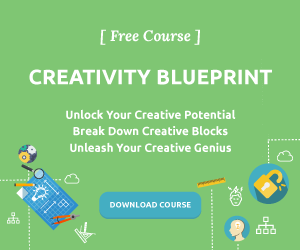The Rise Of Flipped Events
I recently had the opportunity to interview over 30 of the world’s leading event professionals as part of the Event Professionals Summit I co-host with Erin Gargan. These top meeting planners, conference organizers and event pros provided some fascinating insights into the future of the events industry.
Hi, I’m James Taylor, business creativity keynote speaker and in today’s episode we look at one of the big trends in the events industry - something I call the Flipped Event.
In this episode, you'll learn:
- Content Driven
- Community
- Networking Events
- Flipped Classroom Model
- Interact
- Millennials
Enjoy this episode?
If you enjoyed the show, please rate it on iTunes or Stitcher and write a brief review. That would really help get the word out and raise the visibility of the Creative Life show.
Transcript
I recently had the opportunity to interview over 30 of the world’s leading event professionals as part of the Event Professionals Summit I co-host with Erin Gargan. These top meeting planners, conference organizers and event pros provided some fascinating insights into the future of the events industry.
Hi, I’m James Taylor, business creativity keynote speaker and in today’s episode we look at one of the big trends in the events industry - something I call the Flipped Event.
Whether its business conferences, association meetings, festivals or small retreats, they are all moving from being primarily content driven to being more and more about community. In the past, the two key reasons why someone would attend an event were for the content (for example to hear new ideas from keynote speakers) and the community (to network and connect with others).
However in recent years because so much content is available online, whether as webinars, podcasts or online training, it has meant events find it increasingly difficult to compete on content alone. Why would you spend thousands of dollars to go and hear some speakers on stage when you can access their ideas from the comfort of your own home?
So instead event professionals are having to focus on really increasing the importance of community and networking at their events. They are doing this through event apps which make it easier for you to connect with people at the event, different styles of keynotes, as well as more focused networking sessions.
But perhaps the main reason that we are seeing this shift from content to community is because so many event attendees now are millennials. Most baby boomers and Gen X would have gone to school or college at a time where it was normal to just sit in a lecture theatre while a teacher blasted you with content for 90 minutes.
However around 10 years ago education in many countries moved to a flipped classroom model. In this model the student watches lectures and trainings online at a computer or tablet and then this allows more of the classroom time to be devoted to talking through the content with your fellow students and applying this knowledge. The average university student now will watch more of their lectures online and as a result has much more time to do interactive activities in the classroom.
So what is happening here is that education has already moved from the sage on the stage to the guide on the side. It’s no wonder then that millennials find the old style of long, one-way keynote presentations at many conferences dull and uninspired.
The result is that I believe keynote speakers will have to blend being a sage on the stage AND that guide on the side. This will take the form of shorter keynotes, longer Q&A sessions, live polling and more breakout networking sessions.
If you have an event coming up and are looking for a keynote speaker then check out my speaking page at jamestaylor.me/speaking. Thanks for watching.



